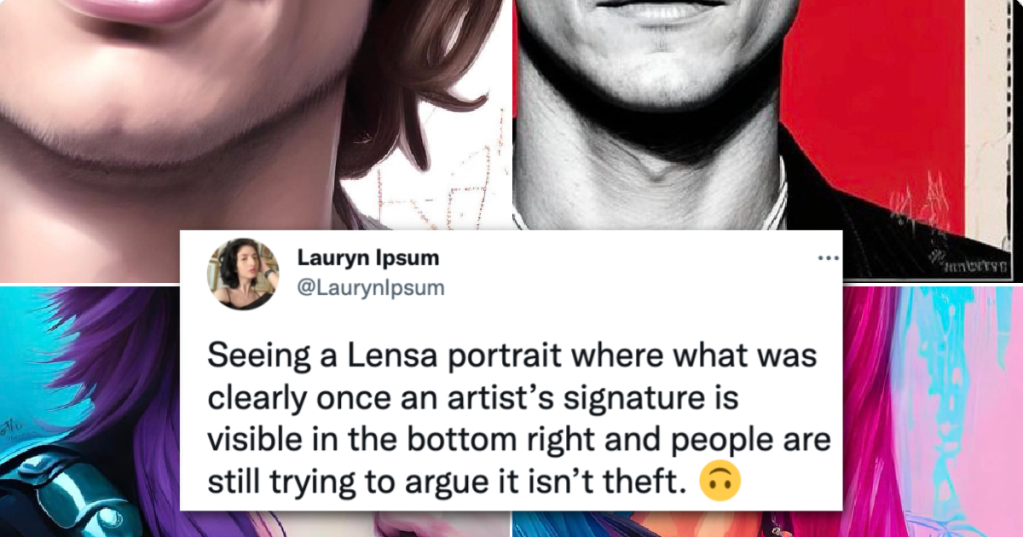If you’re even tangentially connected to the art world, you’ve been hearing a lot about AI art, AI creating art, AI ripping off artists, and the like.
And while the Lensa app isn’t technically stealing anything, the art it’s creating will likely shake up the art world for years to come.
AI technology has started to shake up visual culture across the board, and of those taking the online world by storm, Lensa just might be the slickest app we’ve seen.
Seeing a Lensa portrait where what was clearly once an artist’s signature is visible in the bottom right and people are still trying to argue it isn’t theft. 🙃
— Lauryn Ipsum (@LaurynIpsum) December 6, 2022
It’s started to run into trouble, though, as more and more artists – like Kim Leutwyler – are claiming they recognize their own style in the portraits it produces.
Even if these artists are feeling as if the heart and soul of their work has been stolen, copyright law technically disagrees.
Lensa is a streamlined and customized front-end for a Stable Diffusion deep learning model, which uses a system called latent diffusion to power its creative output.
“Latent” meaning it’s a quality or variable that can’t be measured directly, which is important when considering copyright law.
When it was being built, the machine-learning algorithms were fed a large number of image-text pairs, teaching themselves billions of ways to connect images and captions.
The result was a complex knowledge based that, to the computer, is nothing but numbers and connections. To access it, we feed it a series of prompts.
I’m cropping these for privacy reasons/because I’m not trying to call out any one individual. These are all Lensa portraits where the mangled remains of an artist’s signature is still visible. That’s the remains of the signature of one of the multiple artists it stole from.
A 🧵 https://t.co/0lS4WHmQfW pic.twitter.com/7GfDXZ22s1
— Lauryn Ipsum (@LaurynIpsum) December 6, 2022
We might type something like “digital art” and “artstation,” the latter of which is home to many contemporary artists, and Stable Diffusion might return something that incorporates styles that are similar to those who are displaying there.
Lensa stands out because it’s managed to streamline the process of textual inversion by taking user-supplied photos and putting them into Stable Diffusion’s existing database.
Basically, Lensa is borrowing ideas from other artists’ work, but isn’t using any of their actual work – and the style and ideas behind people’s work are not able to be copyrighted.
Which doesn’t stop artists from being upset, a fact that could lead to new and more targeted legislation that tries to keep up with the technology.
That said, while the AI generated art might be easy and cheap, most believe it will not replace the personality, experiences, style, and context that a human artist brings to their work.
its a severe violation of intelectual propriety. stealing implies subtraction in a objective way. copying without proper autorization shouldn´t diminish the original creator´s work, berne´s convention got us covered in 181 countries since the paris act of ´71.
— Arthur Souza (@musicaarthur) December 6, 2022
As an artist, I would like to see AI be put to work doing menial tasks that would free artists up to create more, but maybe that’s a pipe dream.
I mean, we don’t want to make it angry, right?
